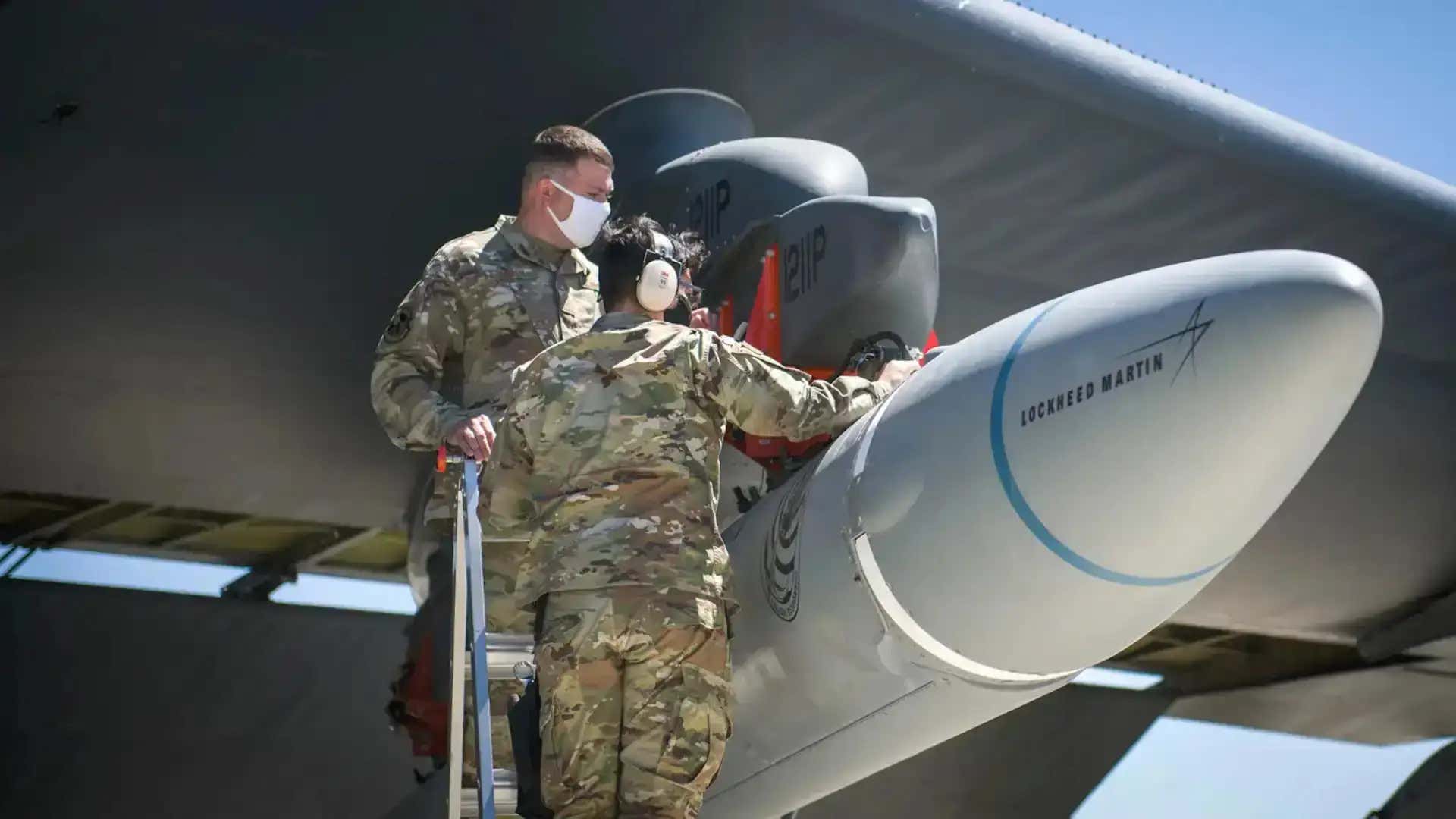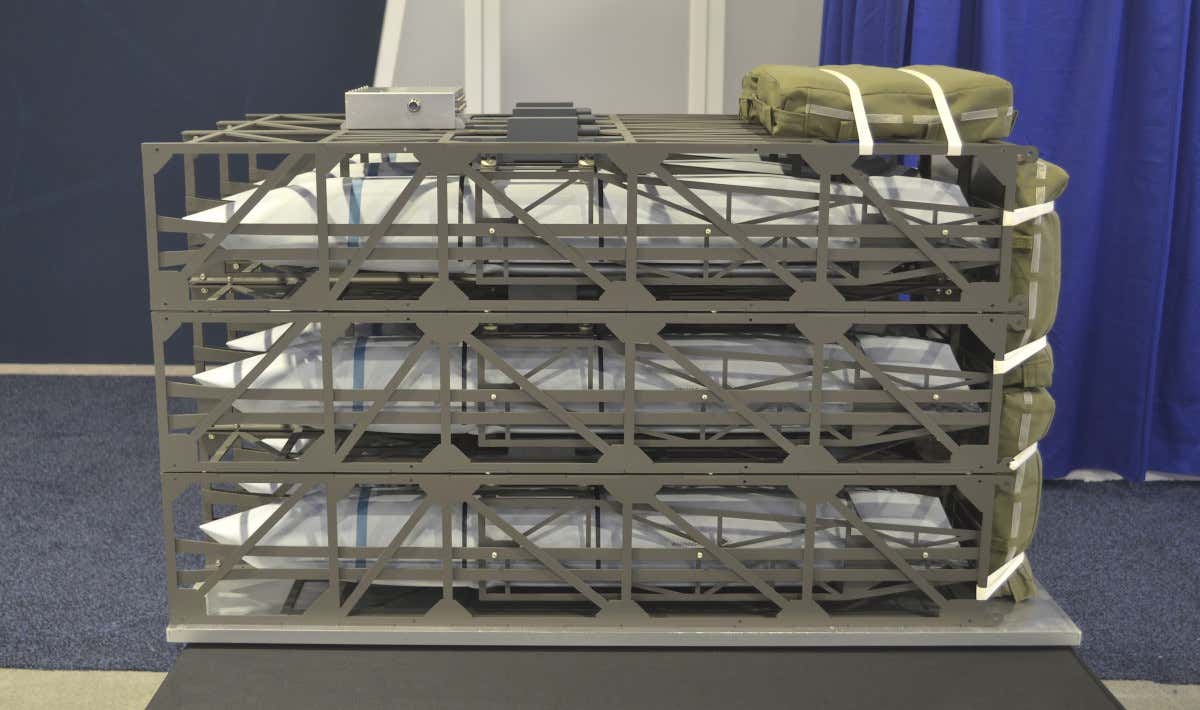The third test flight of the US AGM-183A Air-Launched Rapid Response Weapon (ARRW) turned out to be a failure just as previous tests, and causes have not been identified, US Air Force Brig. Gen. Heath Collins told the War Zone magazine.
During the test that took place on Wednesday, the missile failed to separate from the wing of the B-52H bomber, the magazine reported, without specifying the venue of the test.
“The launch sequence was aborted before release with an unknown issue. The missile will return to the factory and analysis of the telemetry and onboard data will begin immediately,” Collins said in a statement to the magazine, adding that the US will try to resume the testings as soon as possible.
The US Air Force said in July that the second ARRW test flight failed after the missile did not ignite properly, and the first test in April failed over the default in the carrier.
The US military is developing at least three types of hypersonic weapons – the Navy’s Conventional Prompt Strike, the Army’s Long Range Hypersonic Weapon, and ARRW for the Air Force.

US Air Force Hits Target With ‘Rapid Dragon’
Earlier, US Air Force (USAF) successfully hit a target with a cruise missile launched from the ramp of a cargo aircraft for the first time as part of its ‘Rapid Dragon’ program.
This test was completed on December 16, according to the Air Force Research Laboratory (AFRL), which is leading the Rapid Dragon program through its Strategic Development Planning and Experimentation (SDPE) office.
The service used its Rapid Dragon Palletized Weapon System to launch a cruise missile with a live warhead from the back of an MC-130J Commando II special operations transport aircraft. The test took place above the Gulf of Mexico at the Eglin AFB Overwater Test Range.
With the U.S. Air Force, @LockheedMartin ’s Rapid Dragon team demonstrated the feasibility of a palletized strike mission by hitting a vessel with a missile deployed from a mobility aircraft.
— Lockheed Martin News (@lmnews) December 16, 2021
After being dropped down from the MC-130J cargo plane’s ramp, the Rapid Dragon system, which has cells for holding multiple cruise missiles, deployed a parachute to slow its fall before releasing a cruise missile from its bottom side.
The cruise missile flight test vehicle (FTV) expanded its wings and tail, established aerodynamic control, ignited its engine, completed a powered pull-up maneuver, and headed toward its newly assigned target immediately after the vertical release, according to the AFRL. “The cruise missile hit its target and destroyed it instantly.”

The type of naval target and cruise missile deployed in the test was kept under wraps. The Joint Air-to-Surface Standoff Missile-Extended Range (JASSM-ER), which includes the AGM-158C Long Range Anti-Ship Missile (LRASM), has been included in previous Rapid Dragon demonstrations.
The Air Force didn’t disclose much about the naval target either, but Lockheed Martin mentioned it as a “vessel”. This could indicate the use of a Long-Range Anti-Ship Missile (LRASM), implying that the test confirmed the Rapid Dragon system’s potential to operate in an anti-ship role. It has undoubtedly been extensively reported in the past that Rapid Dragon would use a JASSM variant of some kind for live-firing testing.

The Air Force released photos from a test in November that entailed the deployment of an actual cruise missile from this palletized munitions system, although one without an engine or a warhead. The pictures conclusively proved that it was a JASSM missile.
This system has been shown in concept art and public displays as being loaded with JASSM-type missiles.
Inspired By A Chinese Weapon?
“The name ‘Rapid Dragon’ is drawn from a thousand-year-old Chinese military-designed crossbow catapult that released several crossbow bolts with the squeeze of a single trigger, unleashing havoc down on armies from great distances,” according to AFRL. “They were known as Ji Long Che—Rapid Dragon Carts.”
The Rapid Dragon concept is developed on the basis of a roll-on/roll-off package that can be used to transform various types of airlifters into additional strike platforms as needed.
This would provide the Air Force with a cost-effective alternative to rapidly increase its overall stand-off strike capability, particularly in the event of a massive showdown with China or Russia.
Other types of weapons or payloads, such as swarms of small drones, could potentially be carried by the palletized launcher. Given that the United States is a major player in the world, questions have been raised regarding how feasible all of this is. During any such conflict situation, Air Force airlifters would very certainly be in high demand to carry out their primary objectives.

AFRL adds that the test over the Gulf of Mexico concludes the current Rapid Dragon test campaign, which began two years ago, but that another end-to-end live-fire flight test with a C-17A Globemaster III aircraft is planned for next year. In prior Rapid Dragon tests, Air Mobility Command (AMC) C-17As and AFSOC EC-130J Super Js were employed.
“By assembling a diverse and capable team, Rapid Dragon was able to accelerate development. We were dedicated to a ‘test often/learn fast’ culture, where we were constantly experimenting and taking calculated risks,” SDPE’s Rapid Dragon Program Manager, Dr. Dean Evans, stated in a release.
“Collaboration from the onset streamlined the process and accelerated development, involving groups from the program inception that are not normally included at the very early stages, and that has made all the difference,” he added.
This “bomb bay in a box” concept, as the Air Force previously referred to it, is made to enable aircraft like the C-130 and C-17 to fire multiple weapons at a distance while remaining out of direct danger. While the Rapid Dragon program may be a step forward in the Air Force’s ability to fire palletized munitions from mobility aircraft, it is not the first time weapons have been delivered from such aircraft.

In 2017, an MC-130 from Cannon Air Force Base in New Mexico dropped a GBU-43/B known as the MOAB, or Massive Ordnance Air Blast, on a tunnel complex built by the Islamic State Khorasan insurgent group in Nangarhar, Afghanistan. Furthermore, if the PLA Navy tries to invade Taiwan, this weapon system might be used to sink a large number of ships.
The Air Force is ready to continue pushing this concept into an operational capability, one that may enhance its long-range attack options in any future contingency, following the successful conclusion of the current round of Rapid Dragon testing and plans to continue this work in the coming year.
- With Inputs from Sputnik
- Contact the author at etdesk@eurasiantimes.com
- Follow EurAsian Times on Google News




